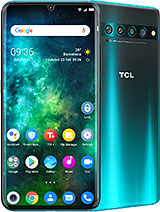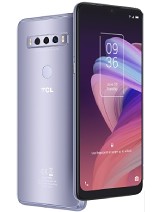TCL 10 Pro: By The Benchmarks! By JuanBagnell
Let's, look at some numbers. Performance testing is tricky price and customer consideration impact our expectations. Also, a company's history is a good way to gauge how a new product might be improved over an older product. This is TCL's first branded phone, so there's nothing to really look back at I. Guess I could throw this up against a blackberry, but that's a radically different software fight. Just to put these scores into some kind of context, I'll be including a few benches from last year's pixel, 3a and I also want to play with a year-old phone where a brand new, not refurbished, not used LG g8 can often be found for around four hundred and fifty dollars mid-Rangers, the toughest competition is often a year old premium flagship.
So, let's see what TCL has to offer here. This is the 10 Pro by the benchmarks. As a baseline. We always want to start with some synthetic numbers and I always think it's interesting to see how synthetic scores line up with real-world tests and Geek bench. We arrive at a single core score: smack dab in between the Pixel 3a and the LG G 8, with performance, looking pretty close to premium Android flagships from around 2 years ago.
The top of the line, 600 series Snapdragon, looks pretty close to the single core performance of a Snapdragon.845 multi-core also gets a nice little bump over the Pixel 3a, but doesn't catch up as much to last year's premium. Chip set or the year before I've got to travel back three years to see similar multi-core performance still in solid territory, for a mid-range err, but I was hoping to see just a touch more horsepower when firing up more cores software. An optimization can have a significant impact on these tests, and it seems Google is able to eke out a bit more torque from a GPU looking at these phones side-by-side and yet the g8 doesn't have any issues. Leapfrogging. The two mid-range errs: that's always going to be one of the perks of buying a higher tier phone.
You're going to get much better GPU performance by a lot. So what does that mean for real-world tests? It means app developers, don't have a lot of faith in these mid-price devices. For example, I can't find a way to activate you, HD video, rendering on kin am aster. You can edit your HD files, but it's going to force you to render out at quad HD, so I'll be focusing on PowerDirector, where the pixel 3 a struggled last year, but could complete some tests. I think this is important, because these phones all shoot 4k video.
Now people might want to preserve their memories at the same quality they shot. Those memories call me crazy for the render test where we take 6 UHD video clips from my mirrorless camera, throw on a watermark transitions and a soundtrack Google's. Optimisation here takes a win in the render test by a very small lead and, of course, the year-old Android flagship can shave quite a bit of time off that score. The transcoding test, though, is a solid win for the TCL. Now I like this streamlined test, because it's a little more what a consumer would see if they were just cutting and splicing from one clip, not stitching a bunch of clips together or adding layers or effects.
Oddly, though, I would consider this to be less demanding than the render test. The fact that I use a much larger video file seems to be the dealbreaker for the pixel. The 3/8 cannot finish this test. Power director pops out a render error. It's game over the TCL is not fast, but it gets the job done on a really high quality video file from my mirrorless camera, the g8 completely mercy the TCL, but I'm excited mid-range err.
Phones are now starting to finish this kind of test. That's decent improvement. Moving right along Google's, stabilization plugin for photos is such a great little tool to help you smooth out some shaky video, and here we see that the little speck bump against the pixel helps deliver a slightly faster finish, and I'm. Also tracking Roarer compression and I love. Seeing real-world versus synthetic scores.
I'm still going to make the argument that even a low-cost phone could help us displace some of our low cost. Laptop use, raw lab shows a decent lead in synthetic scores for the TCL, but when actually running a longer compression test, the performance, normalizes and the 10 Pro only manages a slight win seconds on this scale is not a huge improvement, and you might even be able to close that gap if the barometric pressure were different. When you run the test switching over to some gaming, as mentioned one of the compromises you make in the mid-range and Android land is GPU performance, but I'm not overly concerned, considering what I actually see in hand. Basically, we walk into this discussion. Knowing we've got to turn down some graphics settings, but maintaining a stable gaming experience is completely possible.
An older cartoon Dungeon looter eternity. This phone kept up a frame rate in the high 50s easily, with numerous enemies on screen. I rarely saw a dip below the low 50s checking out a great RPG battle. Chaser suffers the most combat sequences, look okay, but this PC port has always struggled with map navigation and its really choppy here. Looking at sky, children of the light graphics also need to be turned down.
You lose out on the eye candy and here the phone often struggles to maintain a fluid frame rate, especially with longer play sessions. This is a game you want to lose yourself in, and these occasional twitches and stutters distract a bit more from the overall experience disappointing, but not surprising, because this is a very demanding mobile title. I hope the developers behind this game might find a way to offer an even lower graphics mode to help people on more modest hardware. But sticking with fantasy exploration, bright Ridge is one of my favorite titles to show this off because you can dial in exactly the kind of graphic specs you might want. If we turn up all the quality settings, we're going to get about nine frames per second at best, but it's not hard dialing, this stuff back to get real playable frame rates, medium textures, restricting the draw distance, it's actually pretty solid, and happily I saw terrific performance on anima I've been grinding a few hours on this Diablo wannabe and only see the occasional stutters on longer play sessions with lots of enemies on the screen.
This is solid and I, probably wouldn't bill gaming as a primary use, a top use for an Android, mid-Ranger, but it's still capable enough hardware to scratch. A decent quality gaming edge. Animal also helps us start a battery life conversation, and this phone is a champ huge battery and medium power. Chipset. This thing runs forever an hour of gaming on Panama only drained about 9% of the battery.
My video streaming test used to be 30 minutes long, that's incredibly difficult to track on a phone like this. So streaming an hour of HD video I landed around a 5% drop. That's perfect, like tied for first place with the OnePlus 8 Pro, with the screen turned down to HD resolution, perfect. You will not be hurting for runtime out in the field on this phone and the recharge rate is pretty solid using the included charger. We topped off 40% of this battery plugged in for 30 minutes.
So that's a decent place to wrap this up. How should we judge price to performance? The TCL 10 pro looks a little less impressive in some heavier lifting tests, but we are seeing where mid-Rangers continue to chip away at the premium flagship lead we're even last year. This series chipset was not capable of finishing some of my harder tests. Now this hardware is stepping up there's a clear trend where a 600 series chipset performs well against a two-year-old premium flagship, but we are in a market where a 1-year-old flagship can sometimes hit the same price window. Where this conversation is gonna, get a bit more interesting is looking at the phone as a whole, I sure my LG g8 doesn't struggle to outperform a TCL 10 pro 4 video rendering, but the temporal benefits from a much larger battery has a newer, larger camera sensor, and both phones are likely in for one major operating system update, so we'll have to keep an eye out for longer-term security.
Patches TCL is a bit of an unknown there, so we're going to have to see how they handle software support. This is going to be a really healthy year for competition in the sub. $500, tear and TCL is joining that tear in a pretty big way, as always, thanks. So much for watching for sharing these videos sharing is super important these days and subscribing to this channel. If you enjoy by the benchmarks.
Let me hear about it down in the comments and if you have any suggestions for future real-world tests to track what are some other uses that we can observe and time to get a handle on smartphone power. If you would like to help support the production of future performance conversations, there are those links down below, or you might consider joining the list of names currently scrolling by on your screen, a growing community of fun, like-minded Tech pals, a huge resource for me as I'm planning, future videos and reviews. There's super cool people, so I hope you'll check them out now. You know where you can find me around the rest of the internet at some gadget guy on the Twitter's and the twitch Facebook's on Instagram and I will catch you all on the next video you.
Source : JuanBagnell


























